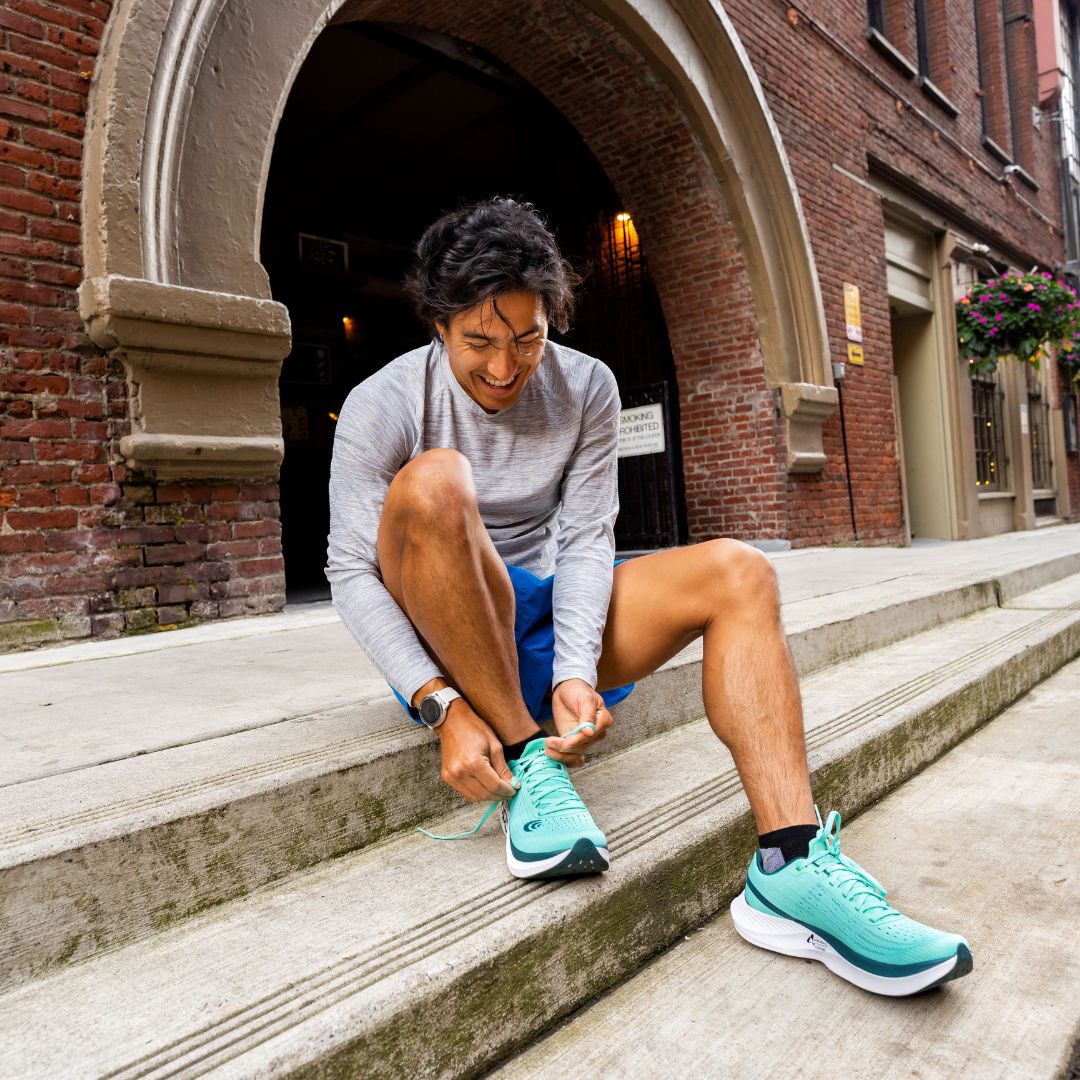Guide: How to manage Göteborgsvarvet

Running a half marathon is a fantastic challenge and an incredible achievement, whether you're aiming to complete the course for the first time or want to improve your time. Göteborgsvarvet is not only one of the world's largest half marathons, but also a race with a unique atmosphere where thousands of runners and an engaged audience make the experience unforgettable.
But how do you go from being a beginner to feeling ready for 21.1 km through the streets of Gothenburg? Here you get a complete guide that helps you prepare in the best way, from training and equipment to strategy on race day.
1. Set a realistic goal – and find your motivation
Before you start training, it's important to think about why you want to run the Göteborgsvarvet and what you want to achieve. Is your goal simply to complete the course without stopping? Do you want to run the entire distance without walking? Or do you have a time goal, perhaps to finish in under two hours?
Having a clear goal makes it easier to keep motivation up during the training period. But remember to be realistic. If you have never run longer than five kilometers before, it may be wise to focus on building endurance rather than aiming for a specific finish time.
A good tip is to write down your goal and remind yourself of it regularly. Put a note on the fridge, set a reminder on your phone, or tell a friend about your goal. Having something to strive for makes it easier to stick to the training plan, even on days when motivation is low.
2. Training plan – How to build your fitness step by step
Running a half marathon requires endurance, strength, and a smart training plan. If you are a beginner, it is important not to rush progress. The body needs time to adapt to longer distances, and by training progressively you reduce the risk of injuries and overuse.
Week 1-4: Build a solid foundation
During the first weeks, it's about getting the body used to regular running. Train three times a week and mix different types of sessions to build both endurance and strength:
- Easy distance runs (5–8 km): Run at a pace where you can talk without getting out of breath. The purpose is to get the body used to being active for longer periods.
- Interval sessions: For example, 5 x 1 minute faster running with 1 minute walking rest between each interval. This helps you build speed and fitness.
- Hill training: Find a hill and run uphill for 20-30 seconds, jog down and repeat 5-8 times. Perfect for building leg strength!
- Supplement with strength training: Focus on core, hips, and legs to prevent injuries and improve running economy.
Week 5-8: Gradually increase and get used to longer distances
Now you are approaching real half marathon training. Gradually increase your long runs so that you can run 12-15 km. You should still have at least three running sessions per week, including one longer run, one shorter faster run, and one interval or hill session.
- Long runs (12-15 km): Maintain a calm and steady pace. The goal is to build endurance, not to run fast.
- Train at half marathon pace: Start testing running parts of your sessions at the pace you plan to maintain during the race.
- Continue with intervals and hill training: These sessions are important for improving endurance and running technique.
Week 9-12: Final polishing and mental preparation
Now that you are approaching the race, it’s time to prepare your body for race day. This means running a long run of 18-20 km, but also starting to reduce training volume in the last week to allow your body to recover.
- Run a test race: If possible, try running 15-18 km at half marathon pace to get a feel for the distance.
- Refine your energy strategy: Test what works best for you – gels, sports drinks, or bananas?
- Mental training: Prepare mentally by visualizing the race and having a plan for tough moments.
3. Equipment – The right shoes and clothes make a difference
Having the right equipment can make a big difference on race day. Here are some important things to consider:
- Shoes: Choose a pair of running shoes suited to your running style and that you have tested thoroughly before the race. Running in new shoes on race day is a sure way to get blisters.
- Clothing: Adjust your clothing choice according to the weather. Göteborgsvarvet takes place in May, which can mean anything from bright sunshine to rain and wind. Choose functional clothes that breathe and wick away sweat.
- Accessories: Try running with a hydration backpack or waist pack if you want to carry your own fluids and energy.
4. Energy and recovery – Fuel your body right
Energy intake is crucial to endure the entire half marathon. Here are some basic guidelines:
- Before the race: Eat a carbohydrate-rich meal the evening before and a light breakfast on race day, such as oatmeal or a sandwich with banana.
- During the race: Make sure to hydrate at the stations along the course. If you usually use energy gels or sports drinks – test them during training so your stomach gets used to it.
- After the race: Recovery starts immediately after crossing the finish line. Drink water, eat something with protein and carbohydrates, and make sure to rest your legs.
5. Race day – How to succeed at Göteborgsvarvet
When the day finally arrives, it’s important to have a clear plan:
- Arrive early at the start area and do a light warm-up.
- Run at your own pace – don’t get carried away by fast runners at the start.
- Keep your spirits up and enjoy the atmosphere along the course. The crowd will help you when it gets tough!
- The last kilometers – focus on milestones, one kilometer at a time, and sprint when you see the finish in Slottsskogen!

















